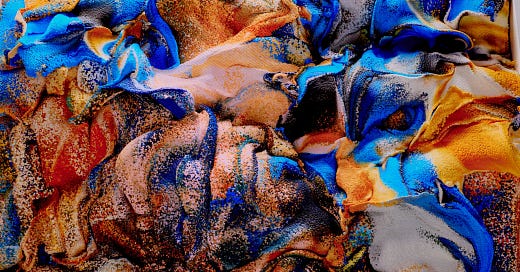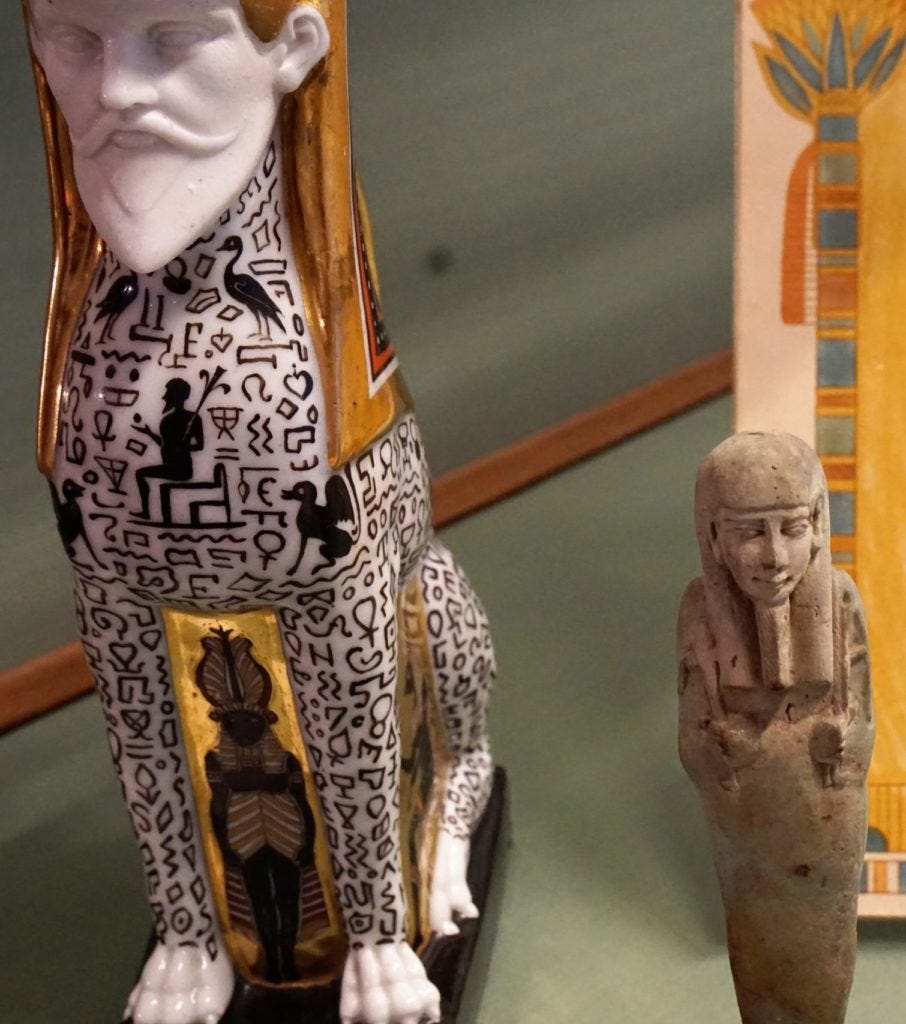Art is dead. Long live art.
The good news is that there is more money in art today than ever before. The bad news is that there is more money in art today than ever before.
A city like New York used to be for the artists, a place where they could come to create and live that almost perfect freedom without its sole focus being the commerce of it all. Ask then Basquiat, ask then Keith Haring (well, maybe not then Warhol)…
Today, the city is filled with expensive galleries selling art for hundreds of millions of dollars, and the excessive rise of housing costs has forced the very artists creating this work, to relocate.
So are they just coming in from upstate New York (or are they do just online anyway so it doesn’t matter where they physically are?). Or in fact, has that glut of creativity not really left New York - it’s just less married to the city, and more treating it like it’s a sexy lover in that once-in-a-while-when-it-suits-me-right French way? We shall find out.
One perspective is how sometimes museums find their own ways to stay relevant in this core shake up by asking us these very questions - “is art even still relevant?” and if it is, what is it?
AI art did certainly make a little dent in that argument for NYC at MOMA…”What would a machine dream about after seeing the collection of The Museum of Modern Art?” For Unsupervised, artist Refik Anadol used artificial intelligence to interpret and transform more than 200 years of art at MoMA. The colossal installation—a crazy size of 24x24 ft digital display filled the entire MoMA lobby and it rendered an infinite animated flow of images, each of them dreamed up as you watch by an AI model fed by the museum’s entire collection of artwork.
And there are other museums also contemplating this, like “Mobile Worlds,” at the Museum für Kunst und Gewerbe (think V&A caliber museum) that opened a few years back. An applied arts museum in Hamburg organized by German curator Roger M. Buergel packed a gallery with objects both valuable and cheap, unique or mass-created, and by artists known and unknown. And things were displayed in ways that you may never have thought things to work together…and that’s where the confusion and magic happened.
The point (although it was purposefully muddled with no texts to assist) was to rethink how we assess beauty, how we think of an object’s significance, how things are culturally appropriated, where objects have traveled from and in turn whether art was art, or something else all together…and how the online world would be looking through this looking glass.
Perhaps it was finally art that isn’t just placed in front of the viewer - art that challenges the very idea of itself…
And then there is no better example of art in interesting ways than “Museum Hack,” the unconventional tour of the best museums in the world. One of their tours in the Metropolitan Museum in New York focuses solely on women artists (complete with a wine stop mid way) and includes a discussion about the #Metoo movement and where it has landed us today. And as Hannah Gadsby, the Netflix phenomenon comedian from Tasmania, shares in her show (“Nanette”) - “Picasso shouldn’t just be lauded for cubism, he should be reconsidered for his ill treatment of women.” And this to me is crucial, absolutely essential, especially in a moment where the country is considering adding a grotesque man to absolute power (thanks SCOTUS) who has treated women (and many others) badly his whole life.
And so perhaps is how art is staying relevant, it’s not just hanging in a museum. It’s not just being critiqued from an ivory tower, it’s hit the internet and it’s being discussed by comedians, Insta-stars and art pomps alike.
I mean, AI is creating art every millisecond of every day. But so are artists in the real world.
Anyway…onwards we crawl.
Today technology is fueling the art world, and the new art buyer is less concerned about art fairs or even galleries; and is rather spending time online to curate their art buying experience. All hail technology and its gorgeous reach.
"There was a significant increase in the number of new buyers purchasing art over the last few years - and many of them are millennials,” says Rebecca Wilson, Chief Curator at Saatchi Art, an online marketplace for art. “There has been a definite shift in comfort levels with purchasing art online which I think reflects the fact that online galleries are finding new ways to combine a personal experience with technology, improving levels of confidence and trust in buyers,” Wilson adds.
New art buyers are coming to the world of art by skipping the perceived snobbery of galleries and fairs, and coming straight to art through social media; specifically Instagram. Hiscox (the underwriter of insurance giant Lloyd’s of London) conducts an annual survey about the art market and they found that 79% of buyers under the age of 35 used Instagram as a means of exploring new artists. “This is having a hugely positive effect for online galleries as younger buyers move easily from social media to online galleries selling art,” says Wilson. And Rob Weisberg, CEO of Invaluable (an online live auction marketplace) agrees: “There has never been a more critical time for our industry to prepare and execute digital strategies that engage, inspire and capture the next generation of art buyers — Millennials.”
“Younger buyers are motivated by accessibility and by discovering art they really love that's affordable which makes the online experience much more likely to be something that they gravitate towards than going from one brick and mortar gallery after another where the selection is limited,” says Wilson. She thinks the experience is often intimidating and prices are often high in comparison with online galleries where most sales are below $5000.
One of the challenges of the online art market is the desire on the part of buyers for price transparency and quality assurance. But Saatchi Art prides itself on price transparency. In fact as Wilson points out there is a price on every artwork they sell so that buyers know upfront what the price is and don't have to ask. “But I think a more widespread level of transparency through some kind of decentralized global inventory is a long way off,” she adds. “I can see the benefits of it for buyers but I think that it goes against the grain of the foundations of so much of the art market which remains one of the most unregulated industries in the world and thrives on a lack of transparency."
As part of all this newness and evolution is Art Republic based in Jacksonville, Florida, who is changing the whole art world model. They have developed a revolutionary new model for the art industry, an Art House offering online sales, global exposure, events, curation and production for meaningful artists, designed for millennials, that modernizes and thus democratizes the market. As their founder, Jessica Santiago, says: “The global art industry has been calling for an intervention for decades with no major innovation.” She believes that most of the current online commerce options have been designed by “old guard professionals” and are not with the insight and direction of actual millennials. “So I think that they are missing major factors that create loyalty and advocacy,” she adds.
And their method? An E-Commerce platform using Blockchain technology will protect artworks, allow digital art to become collectable, build trust amongst buyers, as well as allow artists to receive royalties on future resales of the work. A so-called new patronage model if you will. “ArtRepublic trusts in impacting change,” says Santiago. “Artists have always wielded technology to redefine the future, for everyone – from Leonardo da Vinci to Occupy Museums. The time is now for resurrecting the rightful role for artists, and their allies.”
Is art perhaps a way to justify our existence?
Humans and animals evolve. It is our very nature. What makes us human is our ability to reflect. Creativity gives us the context to do this and technology (Ai and others) is the fuel for this progress. In fact, the future of living depends on it. The awe of technology and art together as competitors - well now that’s the kind of friction I am interested in. And this is where we can gaze our navels but with more purpose…I say hop to some omphaloskepsis…
And perhaps this is what will save us from the robots, the looming orange and eye-linered fascists, or simply just from ourselves…







